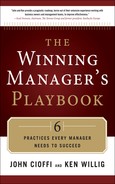Survival of the fittest ideas
We concluded long ago that all successful businesses are not purposefully planned. Some are, for sure. Others seem to have somehow stumbled upon success, like winning the lottery.
When we looked closer at some of these “lottery wonders,” we noticed something unexpected. Oftentimes it was a stroke of good fortune, or, as some of the owners might say, a single source of spontaneous brilliance, that eventually led to the company’s overall success. Without that single event, the company likely would not have enjoyed the success it did.
These events often began as an inspiration or a small idea with no defined outcome. Sometimes they worked and sometimes they didn’t.
We are big proponents of encouraging the development of these spontaneous ideas. There are just too many examples, in almost any business, of unforeseen fortune arising from seemingly meager ideas.
The evolution of these ideas into successful business activities mimics Darwin’s theory of evolution. In this case, however, these ideas are vetted by the marketplace, and the “fittest” are the ones that survive.
This notion is a very useful tool to managers. It frees them from the perceived requirement that they somehow must anticipate successfully their every business decision. In fact, many managers are intimidated by the idea that they might somehow be punished for making a mistake.
Instead, it is actually useful if you consider your ideas to be “market mutations.” These ideas are untried, outside your normal way of doing business, and perhaps even without any market research to justify them. They are, in essence, simply ideas that you think might work—they’re experiments.
Now, here is where some discipline comes into the picture. You know from experience that you don’t want to bet your entire company on some hair-brained new idea (despite the fact that there may be some rare and legendary companies that did just that).
But you might be willing to incubate these new ideas, as long as you establish some guidelines for success. So here are our guidelines:
1. Managing the activity. You must have at least a minimum knowledge of how to manage the activity with your existing expertise, or else you have included in your budget and schedule the intent to acquire this expertise. You will not allow your core business to suffer while you attempt to learn how to manage an activity that is beyond your capabilities.
2. Financially Digestible Costs. The activity should be an acknowledged “company experiment.” In the event that the experiment fails (which it will, in many cases), you have the financial robustness to absorb the costs. In such a case, you attempt to learn whatever you can from the experience.
3. Budget and Schedule. The overall company, or specific departments within the firm, should be given budget authority to conduct their experiments within a specified schedule or deadline (you can’t run the experiment forever). Thus, the firm creates a budget designed to absorb these costs. In effect, these activities are internal research and development efforts, and you expect only a percentage of them to become successful.
4. Risk/Reward. A convincing case must be made that the potential rewards associated with this activity are justified by the risks. The person proposing the ideas knows that they don’t know much (that’s why it’s an experiment in the spirit of a Darwinian mutation), but they somehow are able to convince others that the company should proceed and try this. “It’s worth a shot.”
Your successful experiments may eventually play a significant role in your company. That’s certainly one of your hopes. In fact, as your experiments come to fruition, or not, you will constantly examine and adapt your strategies and your goals.
The take-home message here is to think strategically all the time. Nurturing Darwinian experiments is just one means of creating and collecting information that can change your strategies. You also can use all of your employees, vendors, and customers to provide you with a never-ending stream of information that is constantly changing. Your challenge is to analyze that constantly-changing information to determine where to go next.
